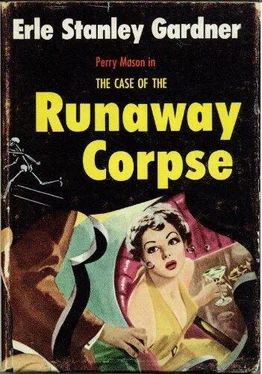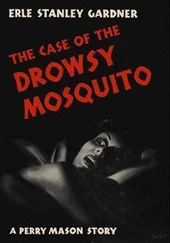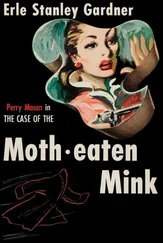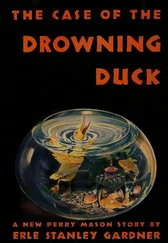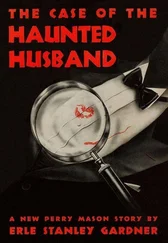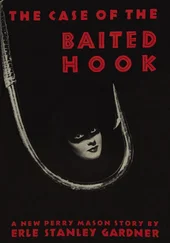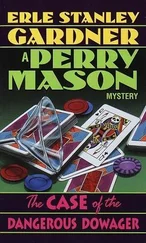Erle Gardner - The Case of the Runaway
Здесь есть возможность читать онлайн «Erle Gardner - The Case of the Runaway» весь текст электронной книги совершенно бесплатно (целиком полную версию без сокращений). В некоторых случаях можно слушать аудио, скачать через торрент в формате fb2 и присутствует краткое содержание. Год выпуска: 0101, Жанр: Классический детектив, на английском языке. Описание произведения, (предисловие) а так же отзывы посетителей доступны на портале библиотеки ЛибКат.
- Название:The Case of the Runaway
- Автор:
- Жанр:
- Год:0101
- ISBN:нет данных
- Рейтинг книги:5 / 5. Голосов: 1
-
Избранное:Добавить в избранное
- Отзывы:
-
Ваша оценка:
- 100
- 1
- 2
- 3
- 4
- 5
The Case of the Runaway: краткое содержание, описание и аннотация
Предлагаем к чтению аннотацию, описание, краткое содержание или предисловие (зависит от того, что написал сам автор книги «The Case of the Runaway»). Если вы не нашли необходимую информацию о книге — напишите в комментариях, мы постараемся отыскать её.
The Case of the Runaway — читать онлайн бесплатно полную книгу (весь текст) целиком
Ниже представлен текст книги, разбитый по страницам. Система сохранения места последней прочитанной страницы, позволяет с удобством читать онлайн бесплатно книгу «The Case of the Runaway», без необходимости каждый раз заново искать на чём Вы остановились. Поставьте закладку, и сможете в любой момент перейти на страницу, на которой закончили чтение.
Интервал:
Закладка:
“And what was your position in the matter at that time?”
Titus grinned and said, “We learned that Edward Davenport was a heavy drinker. We skirmished around and found a witness who’d seen someone in the same patterned pajamas the man was wearing climb out of the window of that unit, and so we decided the fellow had got hold of some alcohol and had gone off on a binge.”
“Then what did you do?”
“Well, at the insistence of Dr. Renault, we retained the key to the room in question while we made an additional investigation.”
“Was any restraint placed upon the movements of the defendant or her companion, Mrs. Ansel?”
“Definitely not.”
“And what did they do?”
“They were located in another unit of the motel.”
“You didn’t give them a key to the cabin?”
“Definitely not.”
“You retained that key?”
“Yes, sir.”
“Now was any attempt made to place the defendant under surveillance?”
“Not at that time. Later on there was.”
“What happened?”
“Well, she told us she was going to stay on overnight at the motel, but about—oh, I don’t know, around seven o’clock the manager of the motel phoned us that she and Mrs. Ansel had left. We traced them to Fresno and found they had taken a plane to San Francisco.”
“What did you do?”
“We telephoned San Francisco to pick her up when the plane landed and put a tail on her.”
“And that was done?”
“Well, of course, I only know now from reports.”
“I understand. I will not ask you what was done by anyone else. Now when did you next see the defendant?”
“That was on the fourteenth.”
“At what time?”
“At four-thirty in the afternoon.”
“And where did you see her?”
“In your office.”
“You had a conversation with her?”
“I did.”
“And generally what did the defendant state to you at that time with reference to a box of candy which had been produced?”
“She stated that she had purchased that box of candy and had placed it in her husband’s traveling bag, that the husband always carried a box of candy with him, that he was a heavy drinker and a periodic drinker. There were times when he felt the craving for alcohol and when he was able to eat candy, and by going on what she called a candy binge, could control the craving for alcohol.”
“She admitted to you that she had bought this box of candy?”
“Yes, sir.”
“Did you ask her at that time whether she had in any way opened the box or tampered with the chocolates?”
“She told me that she had simply purchased the box of chocolates and had placed it in her husband’s bag, unopened, as it came from the candy store. That she had taken off the outer wrappings because she had purchased two boxes at the same time, but that she had not disturbed the cellophane wrapper around the box.”
“Did you examine that box of chocolates?”
“Yes, sir.”
“For the purpose of determining latent fingerprints?”
“Yes, sir.”
“What did you discover?”
“I found two chocolates which had the prints of the defendant’s right thumb and right forefinger.”
“Were you able to photograph those prints?”
“Yes, sir.”
“Do you have the photographs with you?”
“I have.”
“Please show them to defendant’s counsel and then I’m going to ask that they be received in evidence.”
“No objection,” Mason said, hastily inspecting the photographs.
“Later on, were you present when those pieces of candy bearing the latent fingerprints were tested for poison?”
“I was.”
“And did you in some way designate those particular pieces of chocolate?”
“Yes, sir. We pasted a small piece of paper on the bottom of those chocolates, numbering one of them number one and the other number two. I placed my initials in ink on that piece of paper.”
“And those two chocolates in your presence were tested for poison?”
“Yes, sir.”
“Cross-examine,” Vandling said.
Mason said conversationally, “Do you know what was found with reference to the presence of poison in those two pieces of chocolate?”
“Only by hearsay.”
“That is hearsay from the toxicologist who performed the test?”
“Yes, sir.”
“But you were there at the time?”
“Yes, sir.”
“What did he say?”
“He said that both of those pieces of chocolate contained cyanide of potassium, that all of the other pieces of chocolate contained arsenic.”
“You know that arsenic usually produces death rather slowly?”
“Yes, sir.”
“And that cyanide produces it very rapidly?”
“Yes, sir.”
“Did you make any attempt as an investigating officer to determine why two pieces of candy containing poison which would bring about almost instantaneous death had been mixed with candy which would bring about a slow death?”
“No, sir. I asked the defendant about that and she insisted all of the time that she had not opened the box of candy, that she had never touched any of the chocolates.”
“That’s all,” Mason said. “No further questions.”
“I will now call Sara Ansel to the stand,” Vandling said.
Sara Ansel, who had been in the back of the courtroom, stood up and said belligerently, “I don’t want to be a witness in this case. I don’t know anything that would be of the slightest help to the prosecution. That young woman who is being tried is my sister’s niece and the poor girl is innocent.”
“Just come forward and be sworn,” Vandling said.
“I’ve told you that I don’t want to be a witness. I—”
“Come forward and be sworn, madam,” Judge Siler announced, and, as Sara Ansel still hesitated, said, “Otherwise you will be tried for contempt of court. This is a court of law. You were called as a witness. You are present. Now come forward.”
Slowly Sara Ansel marched down the aisle, through the swinging gate in the section reserved for attorneys and witnesses, and up to the witness box. She held up her right hand, was sworn, smiled reassuringly at Myrna, then sat down and glared at Vandling.
“You’re Sara Ansel?” Vandling said. “You are at the present time living in Los Angeles with the defendant in this case in a house which was formerly the property of William C. Delano. Is that right?”
“That’s right,” she snapped.
“How were you related to William C. Delano?”
“I wasn’t related, that is, not actually. My sister married William Delano’s brother.”
“They are both dead?”
“Both dead.”
“What relatives did Delano have at the time of his death?”
“He had none at the time of his death other than Myrna, unless you could call me a relative by marriage.”
“You were his sister-in-law?”
“In a way, yes.”
“He referred to you as such?’
“Yes.”
“You had seen William C. Delano several times in his lifetime?”
“Several times.”
“Now shortly before his death did you see him?”
“Yes.”
“How long before his death?”
“Approximately a month.”
“Now can you describe generally the condition of William Delano’s household during that month? Who was there?”
“I was there, and his niece, Hortense Paxton, was there, and Myrna and Ed Davenport. Myrna came to help with the work.”
“And what happened to Hortense Paxton?”
“She died.”
“And after that William Delano died?”
“Yes.”
“About how long after Hortense Paxton’s death was it that William Delano died?”
“A little over two weeks.”
“During that two weeks he was a very sick man?”
Читать дальшеИнтервал:
Закладка:
Похожие книги на «The Case of the Runaway»
Представляем Вашему вниманию похожие книги на «The Case of the Runaway» списком для выбора. Мы отобрали схожую по названию и смыслу литературу в надежде предоставить читателям больше вариантов отыскать новые, интересные, ещё непрочитанные произведения.
Обсуждение, отзывы о книге «The Case of the Runaway» и просто собственные мнения читателей. Оставьте ваши комментарии, напишите, что Вы думаете о произведении, его смысле или главных героях. Укажите что конкретно понравилось, а что нет, и почему Вы так считаете.
